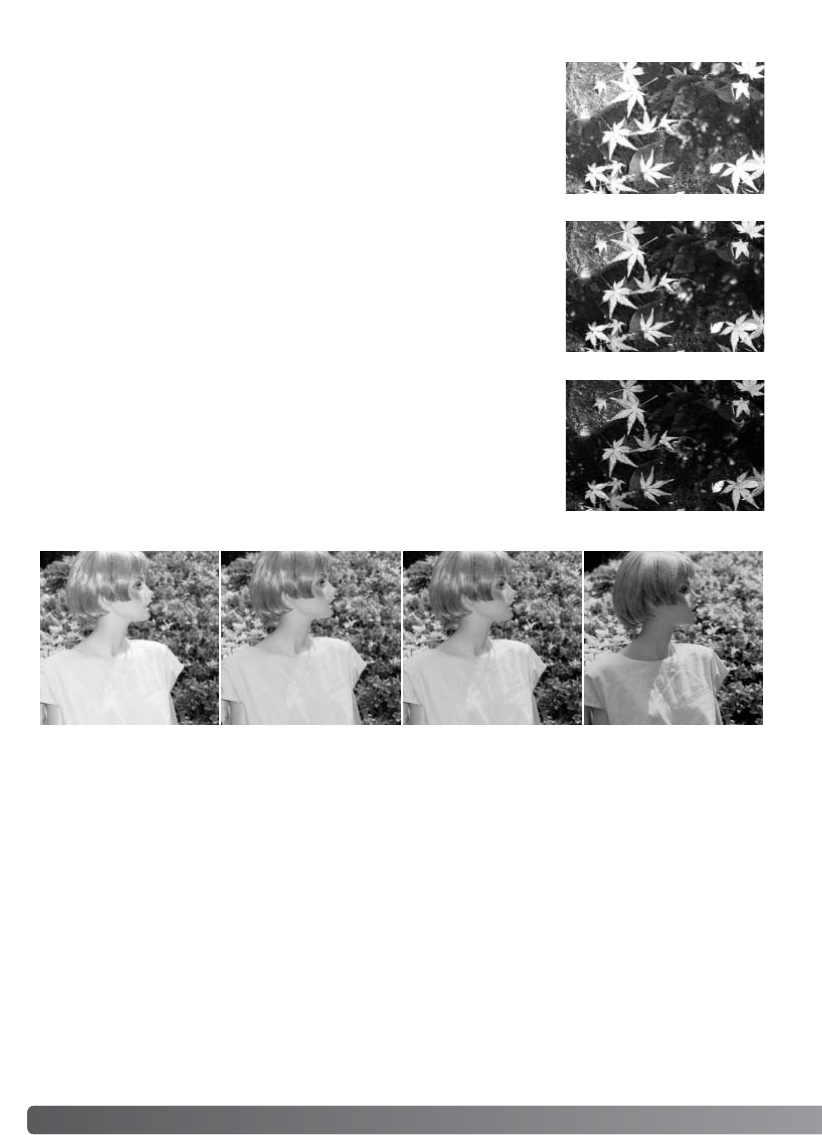
Sometimes the camera’s exposure meter is deceived by certain condi-
tions, exposure compensation can compensate for this. For example, a
very bright scene, such as a snowy landscape or a white sandy beach,
can appear too dark in the captured image. Before taking the picture,
adjusting the exposure by +1 or +2 EV will result in an image with nor-
mal tonal values.
In the example on the right, the dark water caused the camera to over-
expose the image making it too bright and washed-out. By compensat-
ing the exposure, detail is brought out in the leaves, and the stones and
water appear richer.
Flash compensation changes the ratio between the ambient and flash
exposures. For example, when using the fill-flash to reduce harsh shad-
ows on the subject caused by direct sunlight, flash compensation can
change the ratio between the highlights and shadows. The fill-flash will
affect the darkness of the shadows without affecting the area illuminat-
ed by the sun. By decreasing the flash output with a negative Ev set-
ting, the shadows will receive less light and be deeper, but will have
detail that would be lost without the flash. Increasing the flash output by
using a positive Ev setting will soften or eliminate shadows.
74
A
SHORT GUIDE TO PHOTOGRAPHY
No compensation Negative compensation
Using exposure and flash compensation
Positive compensation No flash
–2.0Ev
–1.0Ev
Camera exposure


















